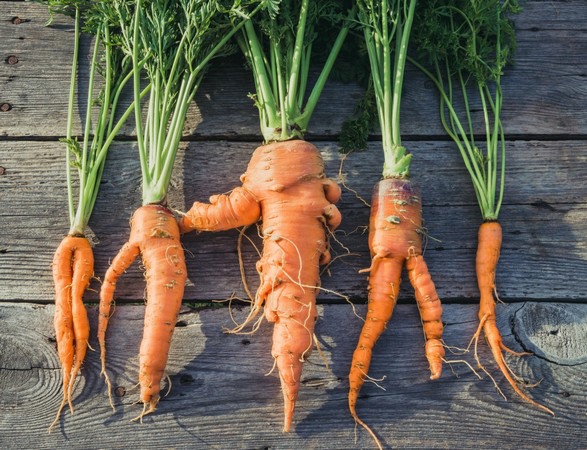Few marketers would recommend that clients call their products ugly — but new research from the UBC Sauder School of Business shows that when it comes to selling misshapen fruits and vegetables, labeling them as “ugly” can be a recipe for sales success.
According to a recent report, U.S. farmers throw away up to 30 per cent of their crops annually — that’s 66.5 million tons of edible produce— because of cosmetic imperfections. An earlier study found that American retailers throw away over $15 billion in edible produce a year. What’s more, 1.4 billion hectares of land and 25 per cent of the world's fresh water are used to grow produce that will later be thrown away.
In 2014, French supermarket chain Intermarché garnered international headlines when it began marketing misshapen produce as “ugly,” and since that time, food retailers around the world have launched campaigns to sell “imperfect produce” or “produce with personality.”

Some have been successful, while others withered on the vine — but until now, researchers hadn’t adequately explained why consumers reject imperfect produce, or what marketing approach was most likely to whet their appetites.
For the study, the researchers at UBC Sauder conducted seven studies that tested the efficacy of ‘ugly’ labeling (describing the unattractive produce as ‘ugly’) by having participants purchase produce at a farmers market and online, and by examining people’s preconceptions about misshapen foods.
Interestingly, they found that consumers expected the imperfect produce to be less tasty and even less nutritious than more traditionally attractive foods.
But it’s not all bad news for unattractive foods. The researchers also found that when the produce is labeled “ugly,” consumer hesitancy disappears — and it’s not because of humour or originality. Calling items “ugly” signals to consumers that the only difference between items is aesthetic, explains Mookerjee, which makes them aware of their bias and significantly increases their willingness to buy the less attractive produce.
The researchers tested their hypothesis with multiple field studies, including one at a local farmers market where they sold both attractive and unattractive tomatoes, carrots and potatoes. They not only found customers spent more on the misshapen produce when it was labeled “ugly”; they also spent more on that ugly produce than they did on the conventionally beautiful foods.
And even though the ugly produce was sold at a 25 per cent discount, it turned out to be more profitable for sellers, as the cost of acquiring the ugly produce was lower.
For more information:
UBC Sauder School of Business
University of British Columbia
Henry Angus Building - 2053 Main Mall
Vancouver, BC V6T 1Z2
Canada
Tel: +1 604.822.8500
